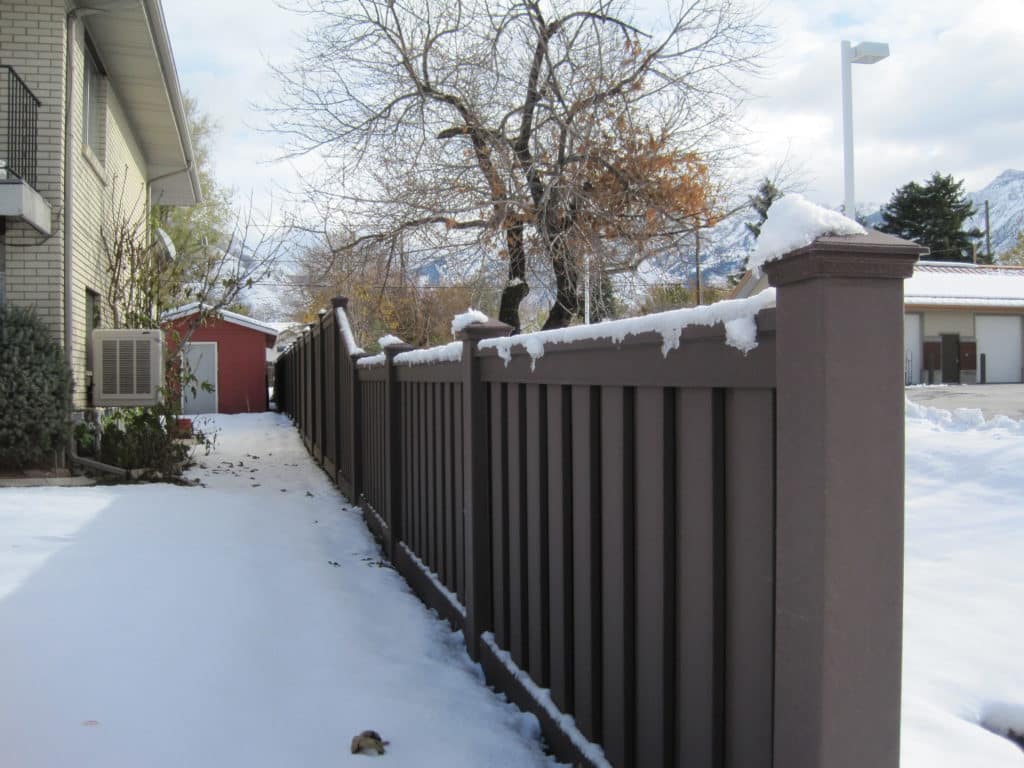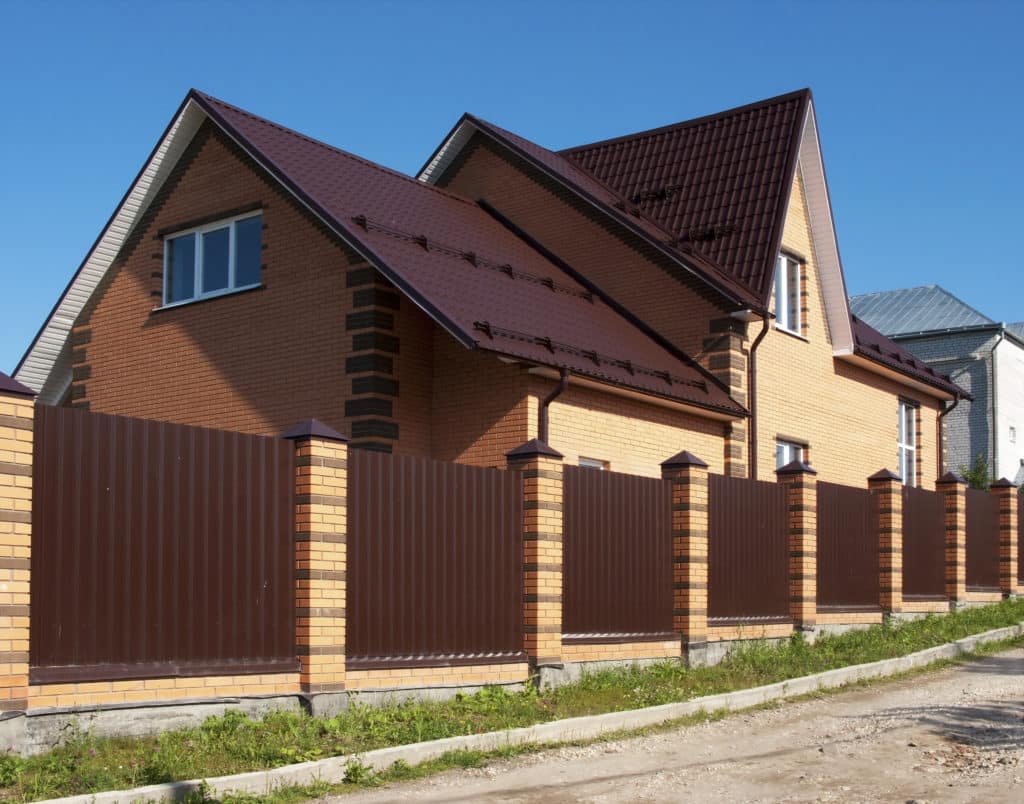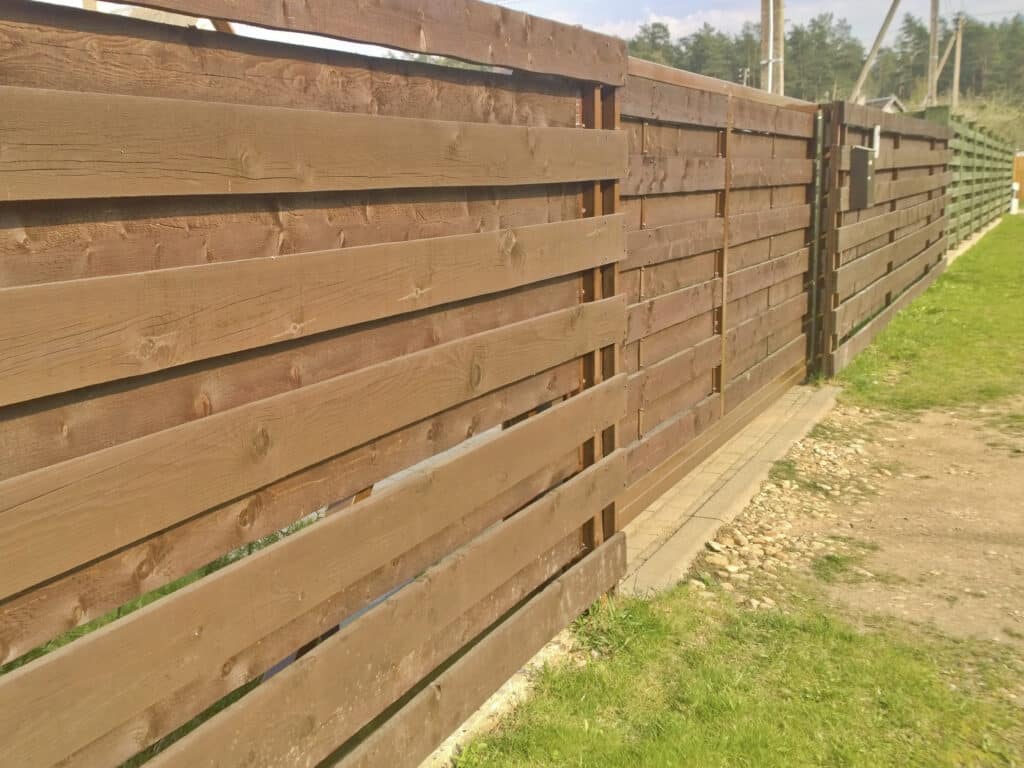Choosing the right fence color is crucial as it impacts the overall aesthetic appeal and integration with the property’s surroundings, reflecting personal style and enhancing curb appeal. Many factors should be considered, including landscape elements, architectural style, exterior colors, and personal preference. Each aspect contributes to selecting the ideal fence color that harmonizes with the environment while meeting functional needs.

1. Assess Your Landscape
The first step to take in order to choose the right color for your fence is to assess the landscape and existing exterior colors and materials. Evaluate the colors of your home’s exterior, including siding, trim, and accents. The fence color should complement or coordinate with these existing colors to create a cohesive and harmonious look. You can also take note of any other exterior features, such as doors, windows, and roofing materials to consider how the fence color will interact with these elements.
The natural surroundings and landscaping elements also play a role in fence color. Take into account the natural surroundings of your property, including trees, shrubs, flowers, and lawn areas. Consider how the fence color will blend in with these elements to create a visually pleasing backdrop.
The colors and textures of plants and foliage may change throughout the seasons, so the color of the fence should complement the varying hues and tones of the landscaping throughout the year.
You should consider the overall aesthetic you want to achieve in your space. For a more natural and organic look, opt for earthy tones that harmonize with the surrounding landscape. Alternatively, for a bold and modern statement, consider contrasting or complementary colors that make a statement against the natural backdrop.
2. Harmonize Your Home With Fence Color
Another aspect to consider with choosing a color for your fence is to match the color with the architectural style of your home. Traditional homes often pair well with classic colors like white or natural wood, while modern homes may benefit from bold or metallic hues. You can harmonize the fence color with architectural details such as trim and accents to create a cohesive look that enhances your home’s overall aesthetic.
Additionally, take into account the materials used in your home’s construction. Opt for a fence color that harmonizes with the textures and tones of materials like brick or stone for a cohesive blend. To find the ideal match, experiment with color samples, ensuring that your chosen fence color enhances the beauty and character of your home’s exterior.

3. Reflect Personal Style
You can also consider the psychological impact of colors on mood and emotion. Warm tones like red and orange can evoke feelings of energy and passion, while cool tones like blue and green may promote calmness and relaxation. Reflect on how different colors resonate with your personal mood and the atmosphere you wish to create in your outdoor space. Whether you seek a vibrant and invigorating ambiance or a serene and tranquil retreat, the right fence color can help set the tone for your outdoor environment.
4. Practical Considerations
Beyond aesthetics, practical considerations should also be taken. Different fence colors may require varying levels of maintenance to keep them looking their best. Lighter colors, such as white or beige, may show dirt and stains more readily and require more frequent cleaning. Darker colors, like brown or black, may fade over time when exposed to sunlight and may require periodic touch-ups or repainting to maintain their vibrancy
Climate and weather conditions in your area should also be taken into account when selecting a fence color. Extreme temperatures, humidity, and exposure to sunlight can affect the durability and longevity of fence colors. A color should be chosen that is resistant to fading, peeling, and discoloration in your specific climate. Applying protective coatings or sealants can prolong the lifespan of your fence color and maintain its appearance in the face of harsh weather elements.
5. Other Fence Style Considerations
There are a few other factors that should be considered before choosing your fence color:
- Do you have impressive landscaping? Do you take pride in your flower beds and want to showcase them? Homeowners who want to highlight their landscaping often find that more understated fence color options such as aluminum, wood, or vinyl complement it better.
- Do you have trim or window shutters? A general guideline is to coordinate your fence with the shutters and trim of your home. This often translates to black or white fences that harmonize with the exterior accents.
- What should be the focal point of your yard? Ponder over what you desire the primary feature of your property to be. Will it be the house, the landscaping, the fence, or the roof? Making this decision in advance will help in selecting the ideal fence color for your needs.
- Are there any HOAs you should consider? Certain HOAs may enforce particular color schemes or materials for fence installations. It is advisable to verify with your community to determine if there are any restrictions in place.

Choose Bronco Fence
Bronco Fence offers a wide selection of fences and assists in selecting the perfect color for your fence. With expertise in fence installation and design, we understand the importance of choosing a color that complements your property. Our team guides you through the selection process, ensuring your fence enhances your home’s aesthetics while meeting your functional needs. Contact us today to get a quote and get started with your fence installation process.

